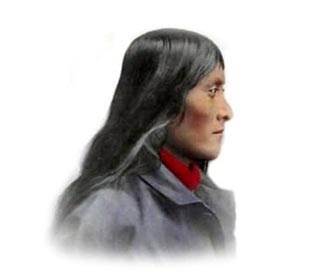Fast Facts about the History of Texas Indians
The climate, land, history, environment and natural resources that were available to the indigenous Indian tribes in Texas resulted in the adoption of the Southwest culture and some adopted the Great Plains Indians culture. - Name of State: Texas
- Meaning of State name: Texas comes from the Caddo Indian word "teysha" meaning "hello friend" referring to the friendly tribes throughout the region
- Geography, Environment and Characteristics of the State of Texas: Gulf coast plain Great plains and low mountains
- Culture adopted by Texas Indians: Southwest Cultural Group and some adopted the Great Plains culture
- Languages: Muskogean and Southern Athabaskan (Apachean) language
- Way of Life (Lifestyle): Hunters and Farmers
- Types of housing, homes or shelters: Farmers lived in Adobe (pueblo) houses. Hunters lived in Hogans
History Timeline of the Texas Indians - 10,000 B.C. : Paleo-Indian Era (Stone Age culture) the earliest human inhabitants of America who lived in caves and were Nomadic hunters of large game including the Great Mammoth and giant bison
- 9000 BC: Clovis Culture (named after artefacts found at Clovis, New Mexico. These people used a distinctive type of fluted arrow point
- 7500 BC: Folsom Culture (named after artefacts found at Folsom, New Mexico. These people used flint arrow point in the shape of a leaf)
- 7000 BC: Archaic Period in which people built basic shelters and made stone weapons and stone tools
- 2000 BC: Pecos Culture begins with changes in architecture, art and pottery for the people who lived in a semi-arid environment
- 1685: Texas claimed by René-Robert Cavelier, Sieur de La Salle (1643-1687) for France
- 1775: 1775 - 1783 - The American Revolution.
- 1776: July 4, 1776 - United States Declaration of Independence
- 1803: The United States bought the Louisiana Territory from France for 15 million dollars for the land
- 1812: 1812 - 1815: The War of 1812 between U.S. and Great Britain, ended in a stalemate but confirmed America's Independence
- 1820: The Texas–Indian wars (1820 - 1875) were a series of conflicts between settlers in Texas and Plains Indians.
- 1830: Indian Removal Act
- 1832: Department of Indian Affairs established
- 1849: The Jicarilla War fought between the Jicarilla Apaches and Ute warriors against the United States
- 1858: Antelope Hills Expedition (aka the Battle of Little Robe Creek) between the Texas Rangers and the Tonkawa against Comanche and Kiowa villages in the Comancheria beginning in Texas
- 1861: 1861 - 1900 Apache Wars in Arizona, New Mexico and Texas. Leaving the reservation attacks were made on outposts led by Geronimo and Cochise. Geronimo surrendered in 1886 but others carried on the fight until 1900
- 1861: 1861 - 1865: The American Civil War.
- 1862: U.S. Congress passes Homestead Act opening the Great Plains to settlers
- 1865: The surrender of Robert E. Lee on April 9 1865 signalled the end of the Confederacy
- 1867: Medicine Lodge Creek Treaty negotiated in Kansas, results in bands of Comanche, Kiowa, Cheyenne and Arapahoe Plains Indians moving to reservations in Indian Territory.
- 1867: The 6th Cavalry post at Buffalo Springs is beseiged by some 300 Comanches.
- 1867: The 9th Cavalry, is attacked at Fort Lancaster by a combined force of nearly 1500 Indians, Mexicans and former Confederate soldiers.
- 1867: The 6th Cavalry post at Buffalo Springs attacked by 300 Comanches
- 1870: 1870 Battle of the Little Wichita River between 6th Cavalry and Kiowa Indians
- 1873: 1873 - The 10th Cavalry consisting of black enlisted men commanded by white officers and called "Buffalo Soldiers" by their Cheyenne adversaries are transferred from Fort Sill, Indian Territory to Texas
- 1874: Red River War in Northern Texas against the Arapaho, Comanche, Cheyenne and Kiowa tribes, who eventually surrendered
- 1877: The Buffalo Hunters' War, or the Staked Plains War
- 1887: Dawes General Allotment Act passed by Congress leads to the break up of the large Indian Reservations and the sale of Indian lands to white settlers
- 1969: All Indians declared citizens of U.S.
- 1979: American Indian Religious Freedom Act was passed
History of Texas Indians - Destruction and Decline
The history of the European invasion brought epidemic diseases such as tuberculosis, cholera, influenza, measles and smallpox. The Native Indians of Texas had not developed immunities against these diseases resulting in huge losses in population. Exploitation including the leverage of taxes, enforced labor and enslavement were part of their history, taking their toll on the Texas Indians. |
